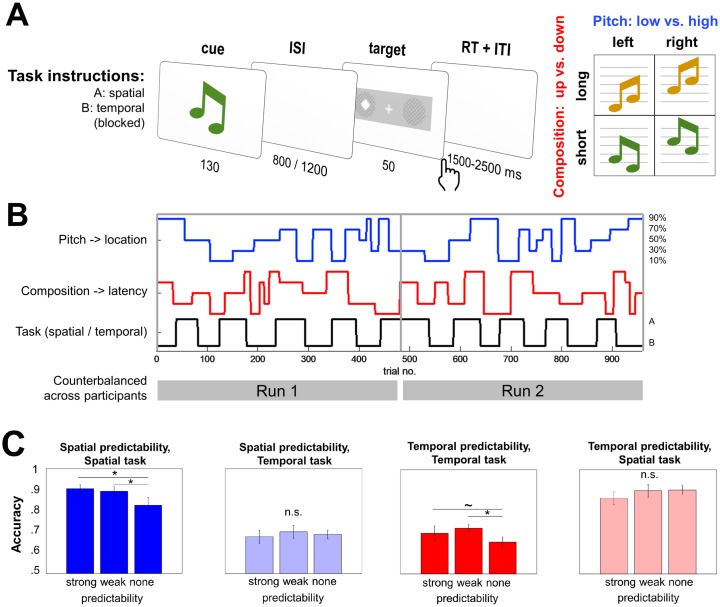Fig 1. Task design and performance.
(A) Participants performed location and latency discrimination of visual targets. An auditory cue consisted of an ascending (orange) or a descending (blue) pair of tones (cue composition), presented at a high or low pitch. The pitch of the cue could predict the location (left versus right) of the visual target, while the composition of the cue could predict the latency (early versus late) of the target, followed by a speeded discrimination response. Participants performed location or latency discrimination in separate blocks. (B) Cue validity varied unbeknownst to the participants over the course of the experiment. Spatial (blue) and temporal (red) validity levels were uncorrelated and changed implicitly. Alternating tasks (black) were prompted by explicit instructions. (C) Predictability interacted with task relevance in both tasks, improving accuracy when the predictions were relevant. The main effect of relevance reflected the differences in accuracy between tasks. N = 17; error bars: SEM; post-hoc t tests * p < 0.05; ~ p < 0.1. Data pertaining to this figure are available on Figshare https://figshare.com/s/2d2755bfdeea1cbb415f. ISI, inter-stimulus interval; ITI, inter-trial interval; n.s., not significant; RT, reaction time.

